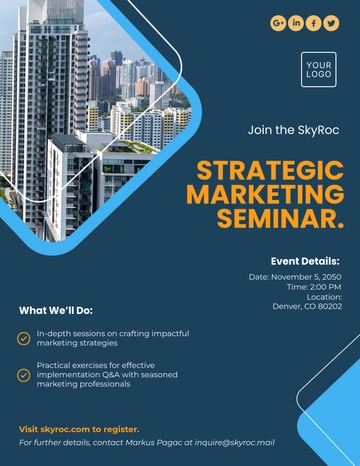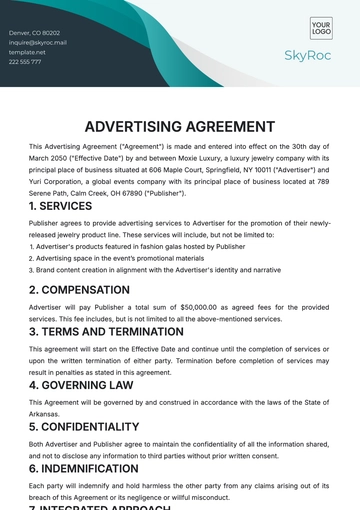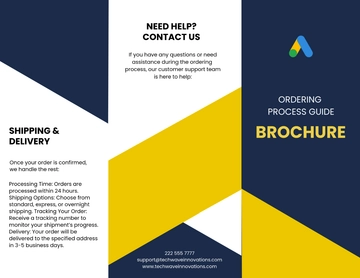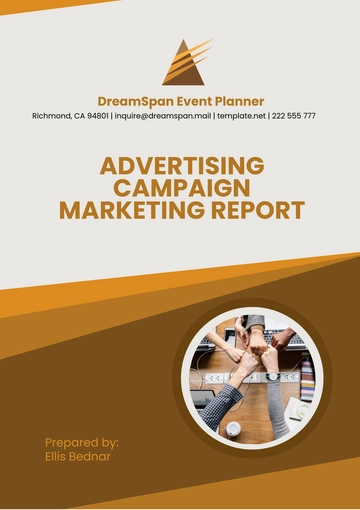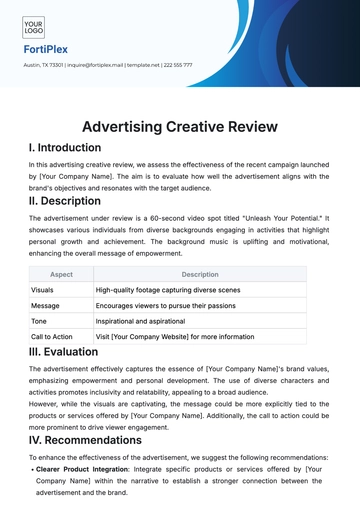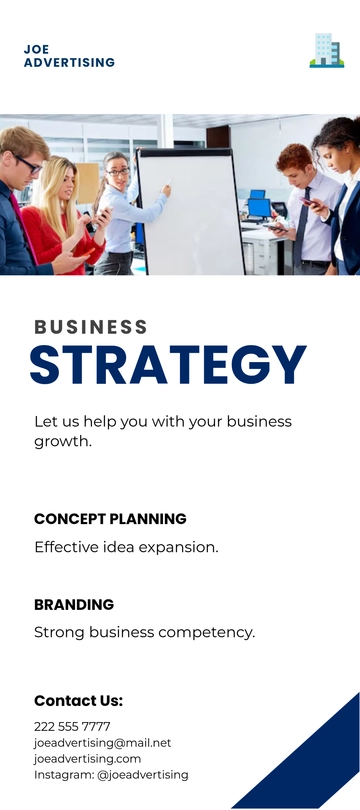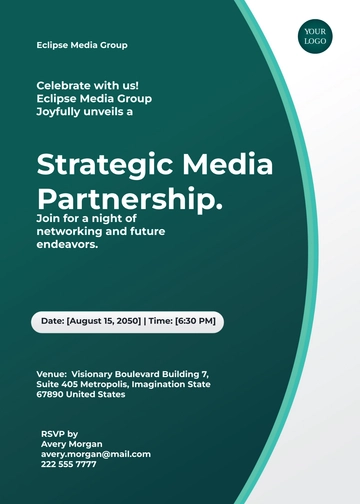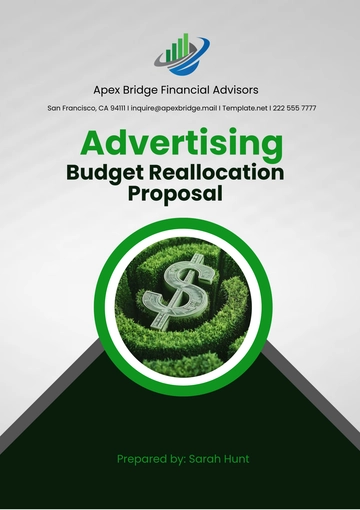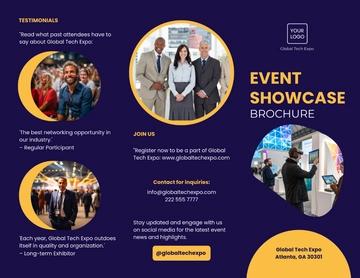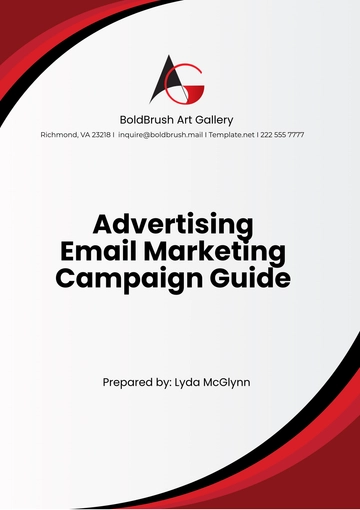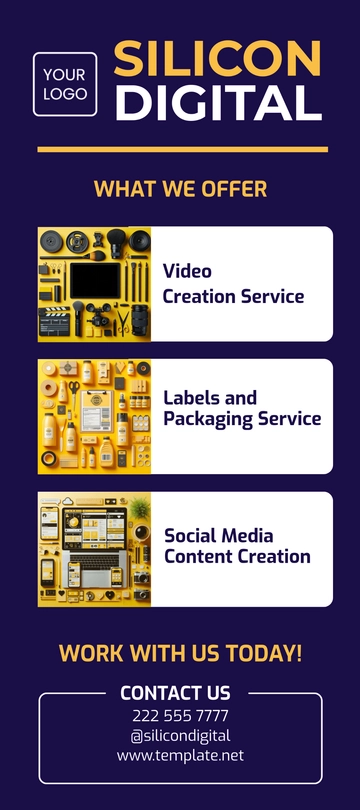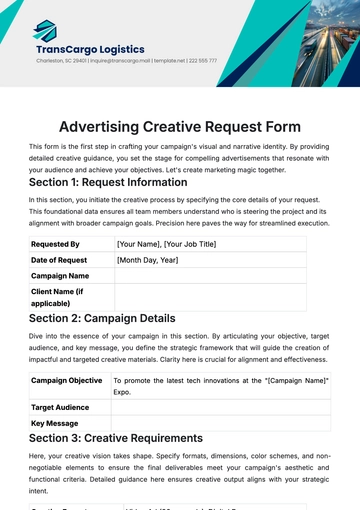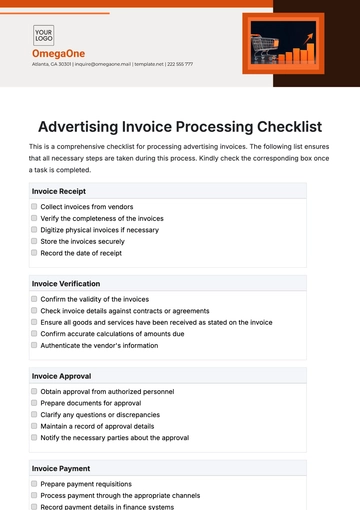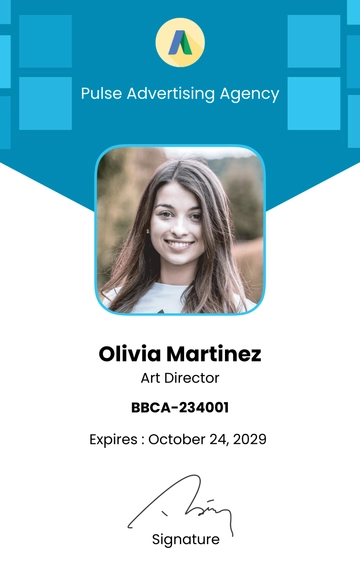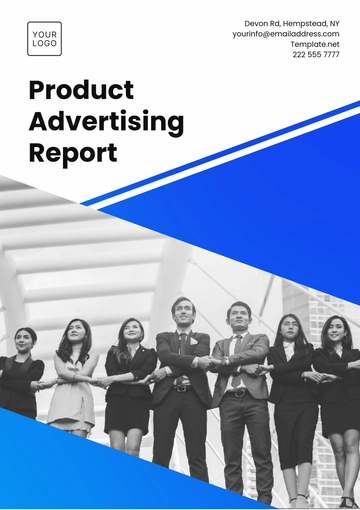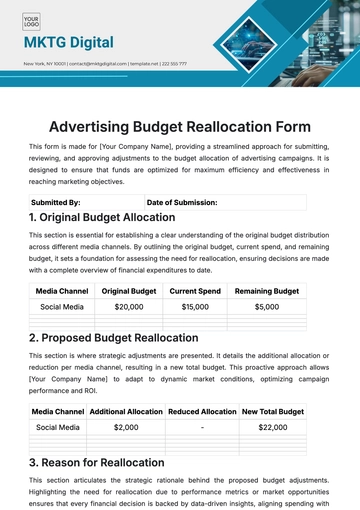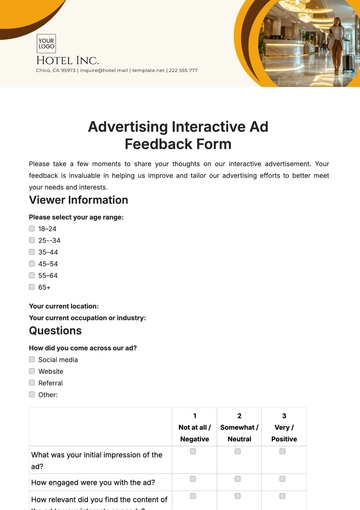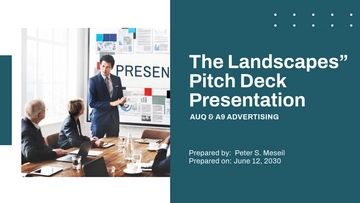Free Media Event Planning Advertising Guide
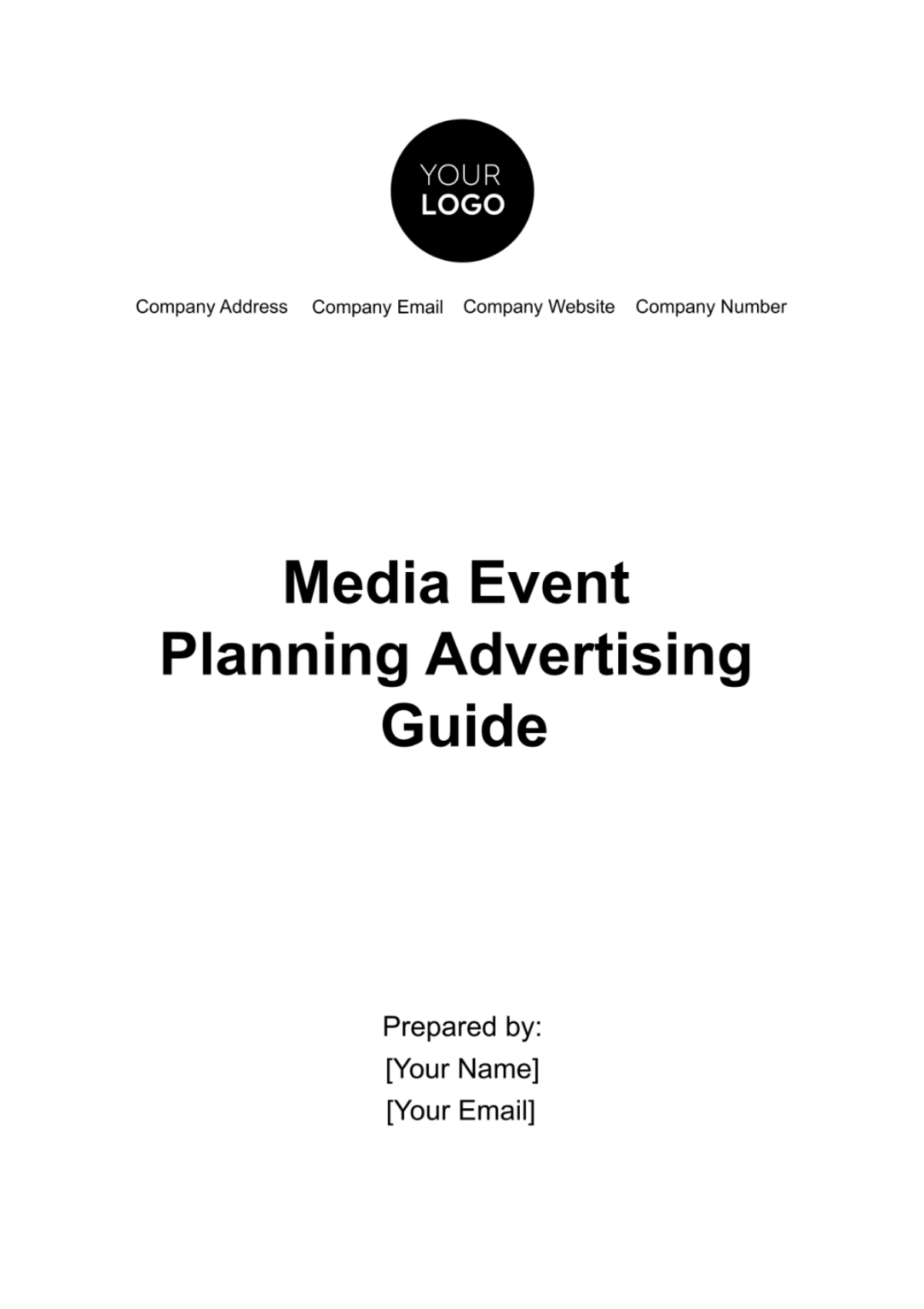
Introduction
The Media Event Planning Advertising Guide serves as a comprehensive roadmap for organizing and promoting media events. Tailored for [Your Company Name], this guide outlines the crucial steps in crafting an effective event strategy that aligns with your branding and marketing goals. It addresses everything from conceptualization to execution, ensuring that each phase of the event is meticulously planned and successfully implemented.
This guide is your go-to resource for planning, advertising, and executing media events.
It encompasses a step-by-step approach to event organization, highlighting key aspects such as budgeting, advertising, and risk management.
Utilize this guide to ensure a seamless, impactful, and memorable media event that resonates with your target audience and meets your organizational objectives.
II. Event Concept and Objectives
Understanding the event's concept and objectives is fundamental to its success. This section helps in defining the event's purpose, identifying the target audience, and setting measurable goals. It's crucial to align the event with [Your Company Name]'s brand identity and marketing strategy, ensuring it effectively communicates the intended message and achieves the desired impact.
A. Define the purpose of the event
Whether it's a product launch, a press conference, or a promotional event, clarity on the event’s purpose is essential.
B. Identify the target audience
The new logo is a green and blue globe, symbolizing the brand’s commitment to sustainability and its global reach. The typography is modern and clean, reflecting innovation and accessibility. The color scheme includes earth tones to represent eco-friendliness and bright blues for technological advancement.
C. Set clear, measurable objectives
These may include metrics like media coverage, audience engagement levels, or lead generation targets.
III. Budgeting and Finance
A well-planned budget is critical to the success of any media event. This section provides a framework for allocating funds to various aspects of the event, such as venue, marketing, and logistics. Effective financial management ensures that the event stays within budget while achieving its objectives.
A. Outline budget allocation
Create a detailed budget, allocating funds to key areas like advertising, venue, equipment, and guest speakers.d
B. Track expenses
Implement a system for monitoring expenses and ensuring they align with the budget.
C. Plan for contingencies
Set aside a portion of the budget for unforeseen costs to ensure financial flexibility.
IV. Venue and Logistics
The choice of venue and logistics management can make or break an event. This section focuses on selecting an appropriate venue that aligns with the event’s theme and audience size, as well as managing logistics to ensure a smooth flow.
A. Venue selection criteria
Consider factors like location, capacity, accessibility, and facilities when choosing a venue.
B. Logistics checklist
Develop a comprehensive checklist covering equipment, seating arrangements, technical support, and other logistical aspects.
C. Vendor management
Coordinate with vendors for catering, decoration, and other services, ensuring timely delivery and quality service.
V. Event Schedule and Program
An engaging and well-structured program is key to maintaining audience interest. This section should detail the event's schedule, including timings for each segment, speaker lineups, and entertainment or networking sessions.
A. Detailed timetable
Develop a minute-by-minute schedule, outlining the start and end times for each segment.
B. Speaker and performer list
Include a list of all speakers or performers, their bios, and the topics they will cover.
C. Activities and breaks
Plan for interactive activities and adequate breaks to keep the audience engaged and comfortable.
VI. Advertising and Promotion Strategy
Effective advertising and promotion are essential for attracting the right audience and creating buzz around the event. This section outlines the advertising channels and promotional tactics to be used, as well as a timeline for rolling out the marketing campaign.
A. Advertising channels
Utilize a mix of digital, print, and social media channels to reach a broader audience.
Digital Channels: Use online platforms such as Google Ads and SEO-focused content to target specific audience demographics. Collaborate with popular industry blogs and websites for banner ads and guest posts.
Print Media: Design attractive posters, brochures, and flyers for distribution in strategic locations like cafes, libraries, and relevant business centers. Partner with widely read magazines and newspapers for ad placements.
Social Media Channels:
Facebook: Leverage targeted ads, event pages, and regular posts to engage with a diverse audience.
Instagram: Utilize visually appealing posts, stories, and sponsored content to captivate younger demographics.
Twitter: Engage in real-time with attendees and influencers through tweets, retweets, and hashtag campaigns.
LinkedIn: Target professionals by sharing informative content and event announcements.
B. Promotion timeline
Develop a timeline for releasing promotional materials, ensuring consistent visibility leading up to the event.
6 Weeks Before the Event: Initiate teaser campaigns on social media; start distributing flyers and posters; launch an email marketing campaign.
4 Weeks Before: Begin online advertising; ramp up social media activity with regular posts and updates; release press releases to media outlets.
2 Weeks Before: Intensify social media campaigns; send reminder emails; engage with influencers for wider reach.
1 Week Before: Launch countdown on all platforms; host live Q&A sessions or webinars; release final press reminder.
Event Day: Utilize live updates, stories, and posts to keep online audiences engaged.
C. Key marketing messages
Craft compelling marketing messages that align with the event’s objectives and resonate with the target audience.
Primary Message: Focus on the unique value proposition of the event, such as "Experience the Future of [Industry] at [Event Name]."
Secondary Messages: Highlight key speakers and their expertise: "Join industry leaders like [Speaker Names] for insightful discussions on [Topics]."
Emphasize networking opportunities: "Connect with fellow professionals and thought leaders at [Event Name]."
Call to Action: "Register now to be a part of this groundbreaking event."
Tertiary Messages: Tailor messages for different platforms, emphasizing the interactive and engaging aspects of the event.
VII. Media Relations and Publicity
Establishing a strong media presence is crucial for amplifying the event’s reach. This section provides strategies for engaging with the media, including plans for press releases, media invitations, and coverage.
Media engagement strategy: Identify key media outlets and tailor pitches to capture their interest.
Press release schedule: Plan and distribute press releases at strategic times to maximize media coverage.
Media kit: Prepare a comprehensive media kit, including press releases, event information, and high-quality images or videos.
VIII. Sponsorship and Partnerships
Sponsorships and partnerships can significantly enhance the event's reach and impact. This section covers strategies for identifying and securing sponsors, as well as defining the roles and contributions of each partner.
Sponsor identification: Target potential sponsors whose brand values align with the event.
Sponsorship packages: Develop attractive sponsorship packages with clear benefits for sponsors.
Partnership roles: Clearly define the roles and expectations of each partner to ensure a collaborative and beneficial relationship.
IX. Risk Management and Contingency Planning
No event is without risks. This section emphasizes the importance of identifying potential risks and devising mitigation strategies. It also covers emergency planning to handle unforeseen situations.
Risk assessment: Identify potential risks related to weather, technology, security, etc., and plan accordingly.
Contingency plans: Develop backup plans for critical elements like venue, speakers, and technology.
Emergency response plan: Have a clear plan for handling emergencies, including medical situations, security breaches, and natural disasters.
X. Post-Event Evaluation
Evaluating the event's success against its objectives is vital for learning and improvement. This section suggests methods for gathering feedback and analyzing key performance metrics.
Feedback collection: Use surveys, social media, and direct feedback to gather attendee opinions.
Performance analysis: Evaluate the event against set objectives and KPIs to assess its success.
Improvement plan: Identify areas for improvement and incorporate learnings into future event planning.
XI. Digital and Social Media Strategy
In today's digital age, a robust online presence is crucial for event success. This section focuses on leveraging digital and social media platforms to enhance event visibility and engagement.
Social Media Campaigns: Plan and execute targeted social media campaigns using platforms like Facebook, Twitter, Instagram, and LinkedIn. Tailor content to each platform to maximize engagement.
Live Updates: Utilize live-tweeting, stories, and real-time updates to keep the audience engaged before, during, and after the event.
Digital Analytics: Track engagement metrics and adjust strategies based on data insights to optimize reach and impact.
XII. Attendee Experience and Engagement
Ensuring a memorable experience for attendees is key to the event's success. This section outlines strategies to enhance attendee engagement and satisfaction.
Interactive Elements: Incorporate interactive sessions like Q&A, polls, and live demonstrations to keep the audience engaged.
Networking Opportunities: Provide platforms for networking, such as breakout sessions, to add value to the attendee experience.
Feedback Mechanisms: Implement immediate feedback tools like digital surveys or feedback stations at the event.
XIII. Visual and Technical Production
The visual and technical aspects of the event play a significant role in its overall impact. This section covers the planning and execution of production elements.
Audio-Visual Requirements: Detail the audio-visual equipment needs, including lighting, sound, and projection.
Technical Rehearsals: Schedule rehearsals to ensure smooth technical execution during the event.
Visual Branding: Incorporate [Your Company Name]'s branding into stage design, presentations, and digital displays.
XIV. Legal and Compliance
Adhering to legal and compliance standards is essential for any event. This section discusses the necessary legal considerations and compliance standards.
Permits and Licenses: Secure all necessary permits and licenses for the event venue, content, and activities.
Insurance: Obtain appropriate insurance coverage for the event, including liability and cancellation insurance.
Compliance with Regulations: Ensure adherence to local regulations, including health and safety standards and accessibility requirements.
XV. Marketing Material and Collateral
Effective marketing materials are vital for promoting the event and providing information to attendees. This section outlines the creation and distribution of event collateral.
Promotional Materials: Develop engaging promotional materials such as flyers, posters, and digital banners.
Event Collateral: Create event-specific collateral like programs, name tags, and handouts.
Distribution Strategy: Plan the distribution of these materials across various channels to ensure maximum reach and effectiveness.
- 100% Customizable, free editor
- Access 1 Million+ Templates, photo’s & graphics
- Download or share as a template
- Click and replace photos, graphics, text, backgrounds
- Resize, crop, AI write & more
- Access advanced editor
Introducing Template.net's Media Event Planning Advertising Guide Template. Editable and customizable through our Ai Editor Tool, this template streamlines the process of planning media events. From logistics to publicity strategies, craft flawless events effortlessly. Elevate your event planning game with Template.net's innovative solutions.
